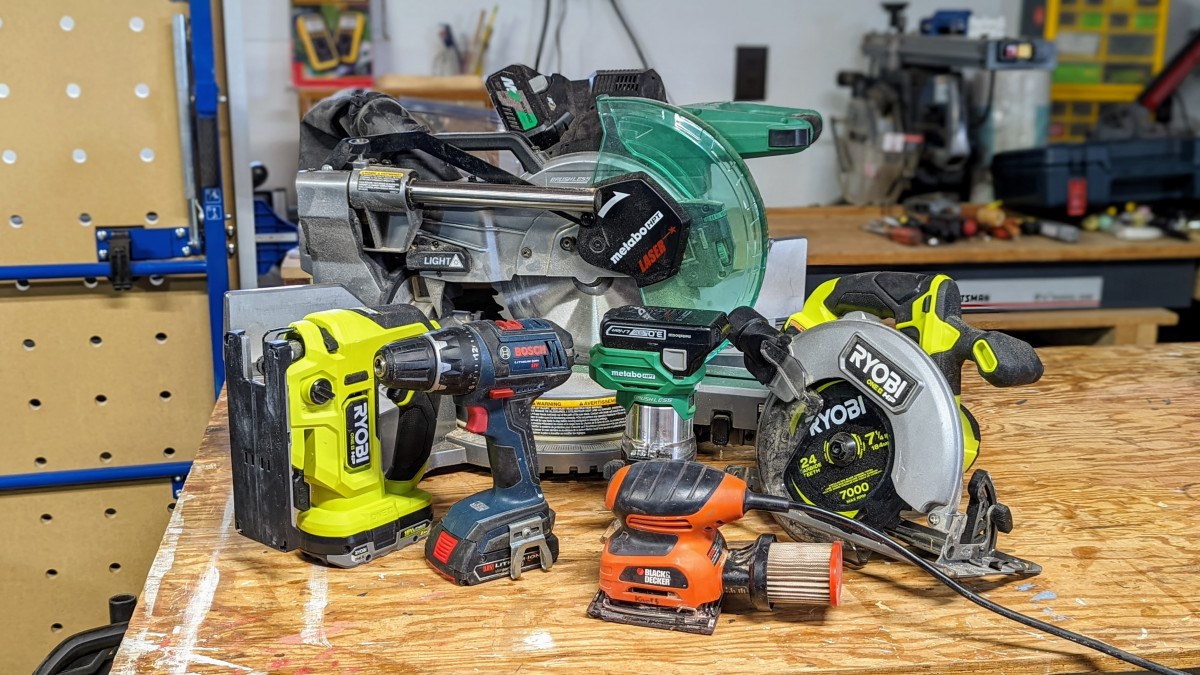

Articles
What Tools Do You Need To Start Woodworking
Modified: February 10, 2024
Discover the essential woodworking tools you need to begin your woodworking journey. Read our comprehensive articles on woodworking tools selection and get started today.
(Many of the links in this article redirect to a specific reviewed product. Your purchase of these products through affiliate links helps to generate commission for Storables.com, at no extra cost. Learn more)
Introduction
Woodworking is a timeless craft that allows individuals to create functional and decorative items from wood. Whether you are a seasoned woodworker or a beginner looking to embark on your woodworking journey, having the right tools is essential to success.
In this article, we will explore the essential tools you need to start woodworking, including power tools, hand tools, measuring and marking tools, cutting tools, joinery tools, sanding and finishing tools, and safety equipment. We will also discuss optional tools for advanced woodworking.
Before diving into the specific tools, it’s important to note that woodworking is a skill that requires practice, patience, and attention to detail. While having the right tools is important, honing your woodworking skills and techniques will ultimately determine the quality of your creations.
Now, let’s delve into the world of woodworking tools and discover the must-haves for beginners and enthusiasts alike.
Key Takeaways:
- Essential woodworking tools, from power to hand tools, measuring and marking tools, cutting tools, joinery tools, and safety equipment, are crucial for crafting functional and beautiful wood pieces.
- Mastering fundamental woodworking techniques with essential tools is the foundation for exploring advanced woodworking tools, opening up new possibilities for intricate and refined projects.
Read more: What Tools Do I Need For Woodworking
Essential Tools for Woodworking
When it comes to woodworking, having a set of essential tools is crucial for any project. These tools will help you measure, cut, shape, join, and finish your wood pieces. Let’s take a closer look at each category of essential woodworking tools:
Power Tools
Power tools are indispensable in modern woodworking, as they make tasks faster and more efficient. Here are a few power tools you should consider adding to your woodworking arsenal:
- Table Saw: A table saw is a versatile tool that enables accurate and efficient wood cutting. It is commonly used to rip large pieces of lumber into smaller, more manageable sizes.
- Miter Saw: A miter saw is ideal for making precise crosscuts, bevel cuts, and compound angle cuts. It’s a valuable tool for creating accurate joinery and shaping wood pieces.
- Router: A router is a versatile tool used for cutting, shaping, and hollowing out wood. With various bits, it can create intricate designs, edges, and joinery.
- Random Orbital Sander: This power tool is essential for achieving smooth surfaces and removing imperfections in your wood projects. It delivers a swirl-free sanding action, ensuring a professional finish.
Hand Tools
Hand tools are the backbone of traditional woodworking. They offer precision, control, and a connection to the craft. Here are some hand tools that every woodworker should have:
- Chisels: Chisels are essential for shaping and carving wood. They come in various sizes and types, including bench chisels, mortise chisels, and paring chisels.
- Hand Plane: A hand plane is used for flattening, smoothing, and shaping wood surfaces. It allows you to achieve precise thickness and remove imperfections.
- Hammers: Hammers are versatile tools used for driving nails, setting dowels, and tapping chisels. Having a claw hammer and a rubber mallet in your toolkit will cover most woodworking needs.
- Screwdrivers: Screwdrivers are essential for tightening screws and assembling wood pieces. Invest in a set with various sizes and types, including flathead and Phillips head screwdrivers.
Measuring and Marking Tools
Accurate measurements and markings are crucial in achieving precise results. Here are some essential measuring and marking tools for woodworking:
- Tape Measure: A tape measure is a fundamental tool for measuring board lengths, widths, and heights. Look for a durable and easy-to-read tape measure with both imperial and metric measurements.
- Marking Gauge: This tool is used to make accurate marks parallel to the edge of the wood. It ensures consistent measurements and helps with joinery layout.
- Carpenter’s Square: A carpenter’s square is essential for checking and ensuring accurate right angles. It assists in making square cuts and checking the alignment of wood pieces.
- Combination Square: This versatile tool combines a ruler and a square. It is used for precise measurements, marking, and checking angles.
These are just a few examples of essential tools for woodworking. It’s important to research and select tools that align with your woodworking goals and projects. As you gain more experience, you can gradually expand your tool collection to meet advanced woodworking needs. Remember, acquiring high-quality tools and taking care of them properly will enhance your woodworking experience and the longevity of your tools.
Read more: What Hand Tools Do I Need As A Mechanic
Power Tools
Power tools play a crucial role in modern woodworking, offering efficiency, precision, and versatility. They can save you time and effort while delivering professional results. Here are some essential power tools that every woodworker should consider:
- Table Saw: A table saw is often referred to as the heart of the woodworking shop. It consists of a circular blade mounted on an adjustable table, allowing you to make precise cuts. With a table saw, you can easily rip large boards, crosscut smaller pieces, and create precise angles. Look for safety features such as blade guards and a sturdy fence system.
- Miter Saw: A miter saw, also known as a chop saw, is designed to make accurate crosscuts and miter cuts. It has a rotating circular blade mounted on a hinged arm, allowing you to pivot and angle the cuts. Miter saws are ideal for cutting trim, molding, and framing materials. Look for a miter saw with a laser guide or digital readout for enhanced accuracy.
- Router: A router is a versatile tool that can perform a wide range of functions in woodworking. It consists of a motor and a rotating bit that cuts through wood. With a router, you can create decorative edges, intricate patterns, and precise joinery. Consider investing in a plunge router, which allows you to adjust the bit’s depth while the router is running for more control.
- Random Orbital Sander: Sanding is a vital step in woodworking to achieve smooth and flawless surfaces. A random orbital sander combines both rotation and oscillation, ensuring a swirl-free sanding motion. It is ideal for removing roughness, fine-tuning surfaces, and preparing wood for finishing. Look for a sander with variable speed settings and a dust collection system.
- Power Drill: A power drill is a versatile tool every woodworker should have in their workshop. It can be used for drilling holes, driving screws, and even sanding with the right attachments. Look for a drill with adjustable speed settings, a keyless chuck for easy bit changes, and a comfortable grip for prolonged use.
- Jigsaw: A jigsaw is a handheld power tool used for making curved and intricate cuts in wood. It features a fine-toothed blade that moves up and down rapidly. Jigsaws are perfect for cutting out shapes, cutting curves, and making plunge cuts. Look for a jigsaw with variable speed control and orbital action settings for better control and versatility.
When purchasing power tools, it’s essential to consider quality and durability. Opt for reputable brands known for producing reliable and long-lasting tools. Additionally, take the time to learn proper usage and safety precautions for each power tool to avoid accidents and maximize their potential.
Remember, power tools can greatly enhance your woodworking experience, allowing you to tackle complex projects with ease. However, it’s also important to balance power tool usage with hand tools, as they offer precision and a deeper connection to the craft. By combining both power and hand tools, you can take your woodworking skills to the next level.
Hand Tools
Hand tools are the backbone of traditional woodworking, offering precision, control, and a sense of craftsmanship. They allow you to shape, carve, and join wood with meticulous attention to detail. Here are some essential hand tools that every woodworker should have in their toolbox:
- Chisels: Chisels are versatile tools used for shaping, carving, and removing material from wood. They come in various sizes and types, including bench chisels, socket chisels, and mortise chisels. Look for high-quality chisels with sharp blades and comfortable handles.
- Hand Plane: A hand plane is an indispensable tool for smoothing, flattening, and shaping wood surfaces. It consists of a sharp iron blade mounted in a body with handles. Hand planes come in different sizes and types, including block planes, bench planes, and smoothing planes. Learn proper technique and maintenance to get the best results from your planes.
- Hammers: Hammers are essential tools for driving nails, setting dowels, and tapping chisels. A claw hammer with a curved end is ideal for pulling out nails, while a rubber mallet is useful for delicate tasks that require a softer touch. Consider having a variety of hammers with different weights and sizes to suit various woodworking applications.
- Screwdrivers: Screwdrivers are essential for tightening screws and assembling wood pieces. Invest in a set of screwdrivers with different sizes and types, including flathead and Phillips head screwdrivers. Magnetic screwdrivers can be particularly helpful when working with small screws.
- Saws: Hand saws are indispensable for cutting wood with precision and control. There are various types of saws, including crosscut saws, rip saws, and dovetail saws. Additionally, a coping saw or a fret saw is useful for intricate and curved cuts. Choose saws with sharp teeth and comfortable handles for efficient cutting.
- Files and Rasps: Files and rasps are used for shaping and smoothing wood surfaces. They remove material quickly and efficiently. Choose files with different cut types, such as bastard, second, and smooth, to accommodate different woodworking tasks. Rasps are ideal for shaping curved contours and removing larger amounts of wood.
When working with hand tools, it’s crucial to maintain sharpness and perform regular maintenance. Sharpening stones, honing guides, and strop blocks are essential accessories for keeping your hand tools in optimal condition.
One of the benefits of using hand tools is the opportunity to develop a deeper connection with the wood and the craftsmanship. They require manual effort and technique, resulting in a unique sense of accomplishment and satisfaction. Embrace the art of woodworking by incorporating hand tools into your projects, and you will discover the joy of creating with your own hands.
Measuring and Marking Tools
Precision and accuracy are paramount in woodworking, and measuring and marking tools are essential for achieving exact measurements and creating precise markings. These tools ensure that your wood pieces fit together seamlessly and your cuts are accurate. Here are some important measuring and marking tools to have in your woodworking toolkit:
- Tape Measure: A tape measure is a fundamental tool for taking measurements in woodworking. Look for a durable tape measure with both imperial and metric measurements. A locking mechanism and a clear, easy-to-read scale are essential features to consider.
- Marking Gauge: A marking gauge is a valuable tool for making accurate markings parallel to the edge of the wood. It consists of a fence that runs along the wood surface and a cutting wheel or a sharp point that scores the wood when adjusted to the desired measurement. A marking gauge ensures consistent measurements and helps with precise joinery layout.
- Carpenter’s Square: A carpenter’s square, also known as a framing square, is an L-shaped tool that assists in checking and ensuring right angles. It is useful for marking, measuring, and checking the alignment of wood pieces. Look for a square made of high-quality metal for durability and accuracy.
- Combination Square: A combination square combines a ruler, a try square, and a miter square into one tool. It is versatile and perfect for both measuring and marking. Look for a combination square with interchangeable heads and a lockable mechanism to ensure accurate angles and measurements.
- Calipers: Calipers are precision measuring tools used for taking accurate measurements of thickness, diameters, and depths. There are various types of calipers, including dial calipers and digital calipers. Choose calipers with a smooth sliding action and a clear, easy-to-read scale for precise measurements.
- Marking Knife: A marking knife is a specialized tool used for making precise and clean markings on wood. It has a sharp, narrow blade that scores the wood fibers, creating a clear and accurate reference line. Look for a marking knife with a comfortable handle and a high-quality, durable blade.
When using measuring and marking tools, it’s important to be deliberate and precise. Take your time to ensure accurate measurements and markings, as they will directly impact the quality and fit of your woodworking projects. Regularly check and calibrate your tools to maintain accuracy.
Investing in high-quality measuring and marking tools is a worthwhile investment in your woodworking journey. These tools will enhance your ability to create precise and professional-quality pieces. Remember, accuracy and attention to detail are crucial in woodworking, and the right measuring and marking tools are indispensable for achieving exceptional craftsmanship.
Cutting Tools
Cutting tools are at the center of any woodworking project, allowing you to shape and transform wood into desired pieces. Whether you need to make straight cuts, curved cuts, or intricate designs, having the right cutting tools is crucial. Here are some essential cutting tools that every woodworker should have:
- Handsaw: A handsaw is a versatile tool used for making straight and angled cuts in wood. There are different types of handsaws, such as the crosscut saw for cutting across the wood grain and the rip saw for cutting along the grain. Ensure your handsaw has sharp teeth and a comfortable handle for better control.
- Coping Saw: A coping saw is a specialized handsaw with a slim blade held by a U-shaped frame. It is perfect for making intricate and curved cuts, such as cutting out designs and making internal cuts. Coping saws allow for precise control and are essential for detailed woodworking projects.
- Jigsaw: A jigsaw is a versatile power tool that excels in making curved and intricate cuts in wood. It features a fine-toothed blade that moves in an up-and-down motion. With a jigsaw, you can create curved edges, irregular shapes, and plunge cuts. Look for a jigsaw with variable speed control for better control over cutting speed.
- Scroll Saw: A scroll saw is a tabletop cutting tool used to make intricate and detailed cuts in wood. It consists of a narrow, vertically-mounted blade that moves up and down. Scroll saws are often used for crafting fine details, such as in fretwork, marquetry, and inlays.
- Utility Knife: A utility knife, also known as a box cutter or a crafting knife, is a handy cutting tool for various woodworking tasks. It is particularly useful for scoring and cutting materials such as veneer, cardboard, and lightweight wood. Look for a utility knife with a retractable blade and a sturdy handle for safety and durability.
- Coping Foot: A coping foot is an attachment that can be added to a jigsaw, allowing it to perform the same type of cuts as a coping saw. With a coping foot, you can achieve greater precision and control when making curved cuts on thicker wood pieces.
When using cutting tools, always prioritize safety. Follow proper cutting techniques, wear appropriate protective gear, and ensure your workpiece is securely held in place. Regularly check and maintain your cutting tools to ensure sharpness and optimal performance.
Having a selection of cutting tools will empower you to tackle a wide range of woodworking projects. Whether you are making straight cuts, curved cuts, or intricate designs, these tools will provide you with the versatility and precision needed to bring your woodworking ideas to life.
Read more: What Do I Need To Sharpen Hand Tools
Joinery Tools
Joinery is an essential aspect of woodworking that involves connecting and securing wood pieces together. Strong and precise joinery is crucial for ensuring the structural integrity and longevity of your woodworking projects. Having the right joinery tools is essential for creating strong, seamless, and beautiful joints. Here are some important joinery tools that every woodworker should have:
- Chisels: Chisels are versatile tools used for shaping wood, but they also play a vital role in creating joinery. They are used to create mortises (hollowed-out slots) and clean up joints for a precise fit. Invest in a set of chisels with different sizes to accommodate various joinery needs.
- Mortise Chisels: Mortise chisels are specialized chisels designed specifically for creating square and clean mortises. They have thick blades and reinforced sides to handle the force of chiseling out the wood to create a mortise. Mortise chisels are available in various sizes to match different mortise dimensions.
- Tenon Saw: A tenon saw, also known as a back saw, is a fine-toothed saw used for creating precise and clean tenon joints. Tenon joints are commonly used for joining rails to legs or creating frames. Look for a tenon saw with a reinforced back for stability and accuracy in cutting tenons.
- Miter Saw: A miter saw is a versatile tool that allows you to create accurate miter joints, which are angled joints commonly used in framing, trim, and picture frames. With a miter saw, you can make precise angled cuts at various degrees, ensuring tight and seamless joints.
- Dovetail Saw: Dovetail saws are used specifically for creating dovetail joints, which are known for their strength and aesthetic appeal. These saws have a fine-toothed blade that enables precise and clean cuts in both softwood and hardwood. Dovetail joints are commonly used in drawer construction and furniture making.
- Router: Routers, with the appropriate bits, are versatile tools for creating a wide variety of joinery. They can be used to create precise dado joints, rabbet joints, and edge joints. Routers offer flexibility and accuracy, allowing you to achieve clean and professional-looking joints.
When working with joinery tools, practice proper technique to ensure clean and precise cuts. Take the time to mark and measure accurately to achieve a tight fit between joints. Additionally, remember to observe safety precautions and wear appropriate protective gear to avoid accidents while using these tools.
Investing in high-quality joinery tools is essential for creating strong and visually appealing joints in your woodworking projects. With the right tools and techniques, you can take your woodworking skills to the next level and create pieces that withstand the test of time.
Invest in quality basic tools such as a saw, chisels, a plane, measuring tools, and a workbench. Quality tools will make your woodworking projects easier and more enjoyable.
Sanding and Finishing Tools
Sanding and finishing are crucial steps in woodworking that bring out the beauty and smoothness of the wood surface. These processes not only enhance the aesthetics of your projects but also ensure a professional finish. To achieve smooth, flawless, and refined surfaces, you will need the following sanding and finishing tools:
- Sanding Block: A sanding block is a handheld tool that holds sandpaper securely in place. It provides stability and even pressure while sanding, resulting in consistent and smooth surfaces. Sanding blocks are available in various shapes and sizes to suit different woodworking needs.
- Random Orbital Sander: A random orbital sander is a power tool that combines random orbital motion with sanding discs. It delivers a swirl-free sanding action, making it ideal for removing rough surfaces, smoothing edges, and preparing wood for finishing. Look for a sander with variable speed control and a dust collection system for cleaner workspaces.
- Sanding Discs or Sheets: Sanding discs or sheets are abrasive materials used with sanding blocks or random orbital sanders. They come in various grits, ranging from coarse to fine. Coarser grits are suitable for removing rough surfaces or shaping, while finer grits help achieve a smooth finish. Select the appropriate grits for each sanding stage, gradually moving to finer grits for a polished result.
- Sanding Sealer: A sanding sealer is applied to the wood surface before the final finish to create a smooth and uniform base. It fills the pores and helps prevent the final finish from being absorbed unevenly. Sanding sealers can be transparent or tinted, depending on your desired result and the type of wood you are working with.
- Wood Stain: Wood stain is used to enhance the color and richness of the wood grain. It comes in a variety of shades and can be applied with a brush, rag, or sponge. Before staining, ensure the wood is properly sanded and free from dust particles for the best results. Experiment with different stain colors to achieve the desired look.
- Wood Finish: The choice of wood finish depends on the desired appearance and level of protection you want to achieve. Common wood finishes include varnish, polyurethane, lacquer, and wax. Apply the finish using a brush, cloth, or spray, following the manufacturer’s instructions. Multiple coats may be necessary for a durable and lustrous finish.
When using sanding and finishing tools, always wear protective goggles, a dust mask, and work in a well-ventilated area. Properly prepare the wood surface by sanding it gradually with progressively finer grits to achieve a smooth and uniform finish.
Remember, sanding and finishing are essential parts of the woodworking process that require attention to detail. The right tools and techniques will ensure that your projects have a professional and polished appearance, showcasing the natural beauty of the wood.
Safety Equipment
Woodworking involves working with sharp tools, powerful machinery, and potentially hazardous materials. Prioritizing safety is paramount to protect yourself from accidents and injuries. Having the right safety equipment is essential for a safe and enjoyable woodworking experience. Here are some important safety equipment items that every woodworker should have:
- Safety Glasses: Safety glasses are a must-have for eye protection. They shield your eyes from flying debris, dust, and wood particles. Look for safety glasses with side shields and lenses that meet ANSI Z87.1 standards to ensure maximum safety.
- Hearing Protection: Woodworking can generate loud noises that can damage your hearing over time. Use hearing protection, such as earmuffs or earplugs, to reduce exposure to loud sounds. Choose hearing protection with a Noise Reduction Rating (NRR) suitable for woodworking environments.
- Dust Mask or Respirator: Woodworking produces fine dust particles that can be harmful if inhaled. Protect your lungs by wearing a dust mask or respirator. Choose a mask that provides a proper seal and is rated for filtering small particles, such as those with a NIOSH N95 rating or higher.
- Protective Gloves: Protect your hands from sharp tools and rough surfaces by wearing durable, well-fitting gloves. Avoid gloves that are too loose, as they can interfere with your grip and dexterity. Choose gloves that provide adequate protection while allowing you to maneuver your tools safely.
- Protective Clothing: Wear clothing that covers your arms and legs to protect against flying wood chips or accidental contact with tools or machinery. Avoid loose-fitting clothing that can get caught in moving parts. Consider wearing a shop apron or a dedicated woodworking smock to keep sawdust off your clothes.
- First Aid Kit: Accidents can happen, so always have a well-stocked first aid kit in your woodworking space. Make sure it contains dressings, bandages, antiseptic solution, adhesive tape, and any necessary medications. Familiarize yourself with basic first aid procedures for common woodworking injuries.
- Fire Extinguisher: Woodworking involves the use of heat sources, such as heaters, torches, or electrical equipment. Keep a fire extinguisher nearby in case of accidental fires. Make sure it is appropriate for extinguishing electrical, wood, and flammable liquid fires.
Remember, safety should always be a top priority. In addition to wearing the appropriate safety equipment, ensure that your workspace is well-ventilated, organized, and free from clutter. Regular maintenance and proper use of tools and machinery will also contribute to a safer woodworking environment.
By following proper safety practices and equipping yourself with the necessary safety gear, you can enjoy woodworking with confidence, knowing that you are taking the necessary precautions to protect yourself and others.
Optional Tools for Advanced Woodworking
For those who have mastered the basics of woodworking and are looking to expand their capabilities, there are several optional tools that can take your woodworking projects to the next level. These tools offer enhanced precision, efficiency, and versatility, allowing you to tackle more challenging and complex woodworking tasks. Here are some optional tools for advanced woodworking:
- Woodworking Router: While routers are included in the essential tools for woodworking, advanced woodworkers may want to invest in a dedicated woodworking router. These routers are typically larger and more powerful, making them suitable for heavy-duty shaping, cutting, and joinery tasks. They often come with additional features such as variable speed control and advanced dust collection systems.
- Jointer and Thickness Planer: A jointer and thickness planer are essential tools for achieving flat and square surfaces on rough lumber. The jointer is used to flatten one face and square one edge of a board, while the thickness planer is used to create parallel and uniform thickness throughout the board. These tools are particularly useful when working with rough or reclaimed lumber.
- Band Saw: A band saw is a versatile power tool that allows for intricate and curved cuts in wood. It uses a continuous loop of teethed blade, which allows for cutting irregular shapes and tight curves. Band saws are great for resawing, making curved cuts, and creating decorative details.
- Wood Lathe: A wood lathe is a specialized tool used for turning wood into cylindrical shapes. It consists of a spinning piece of wood called a blank and a stationary cutting tool. With a wood lathe, you can create bowls, spindles, table legs, and other rounded or cylindrical objects.
- Dovetail Jig: Dovetail joints are known for their strength and aesthetic appeal. A dovetail jig is a specialized tool that helps guide and cut precise dovetail joints. It is especially useful for producing consistent and professional-looking dovetail joints in a fraction of the time it would take to hand-cut them.
- Spindle Sander: A spindle sander is a sanding tool that uses spinning drums or spindles to sand curved or irregular surfaces. It provides better precision and control for sanding concave or convex profiles that cannot be easily sanded with a flat sanding block or orbital sander.
- Biscuit Joiner: A biscuit joiner, also known as a plate joiner, is a tool used to create strong and precise joints using small oval-shaped wooden biscuits. It is particularly useful for joining edges and mitered corners, allowing you to reinforce and align pieces of wood for a seamless connection.
These optional tools are not essential for beginners but are invaluable for advanced woodworkers who are ready to take on more intricate and challenging projects. As with any tool, it’s important to familiarize yourself with proper usage, safety considerations, and maintenance guidelines to ensure optimal performance and results.
Remember, advanced woodworking tools can open up new possibilities and allow you to achieve greater precision and creativity in your projects. However, mastering fundamental woodworking techniques and gaining experience with essential tools should always be your foundation before exploring these advanced tools.
Read more: What Hand Tools Do I Need For Woodworking
Conclusion
Woodworking is a craft that requires skill, creativity, and the right tools. Whether you are a beginner starting your woodworking journey or an experienced woodworker looking to expand your capabilities, having the essential tools is crucial for success. By equipping yourself with the proper tools, you can create functional and beautiful pieces that showcase your craftsmanship.
In this article, we explored the essential tools for woodworking, including power tools, hand tools, measuring and marking tools, cutting tools, joinery tools, sanding and finishing tools, and safety equipment. Each category of tools serves a specific purpose and contributes to the overall woodworking process.
Power tools provide efficiency and versatility, allowing you to tackle various tasks with speed and precision. Hand tools offer a more personal and connected approach, providing control and skill development. Measuring and marking tools ensure accuracy and precise joinery, while cutting tools shape and transform wood into desired pieces. Sanding and finishing tools bring out the beauty and smoothness of the wood surface, and safety equipment is essential for protecting yourself from potential hazards.
For advanced woodworkers, optional tools such as woodworking routers, jointers, and band saws open up new possibilities and allow for more intricate and refined work. By mastering fundamental techniques with essential tools, advanced woodworkers can take their woodworking projects to new heights with these specialized tools.
Remember, woodworking is more than just tools and equipment. It’s a craft that requires practice, patience, and attention to detail. While having the right tools is important, developing skills, honing techniques, and embracing the creative process are equally crucial.
As you continue your woodworking journey, invest in high-quality tools, prioritize safety, and always strive for continuous learning and improvement. With dedication and passion, you can create masterful pieces that reflect your unique style and bring joy to both yourself and others.
Frequently Asked Questions about What Tools Do You Need To Start Woodworking
Was this page helpful?
At Storables.com, we guarantee accurate and reliable information. Our content, validated by Expert Board Contributors, is crafted following stringent Editorial Policies. We're committed to providing you with well-researched, expert-backed insights for all your informational needs.
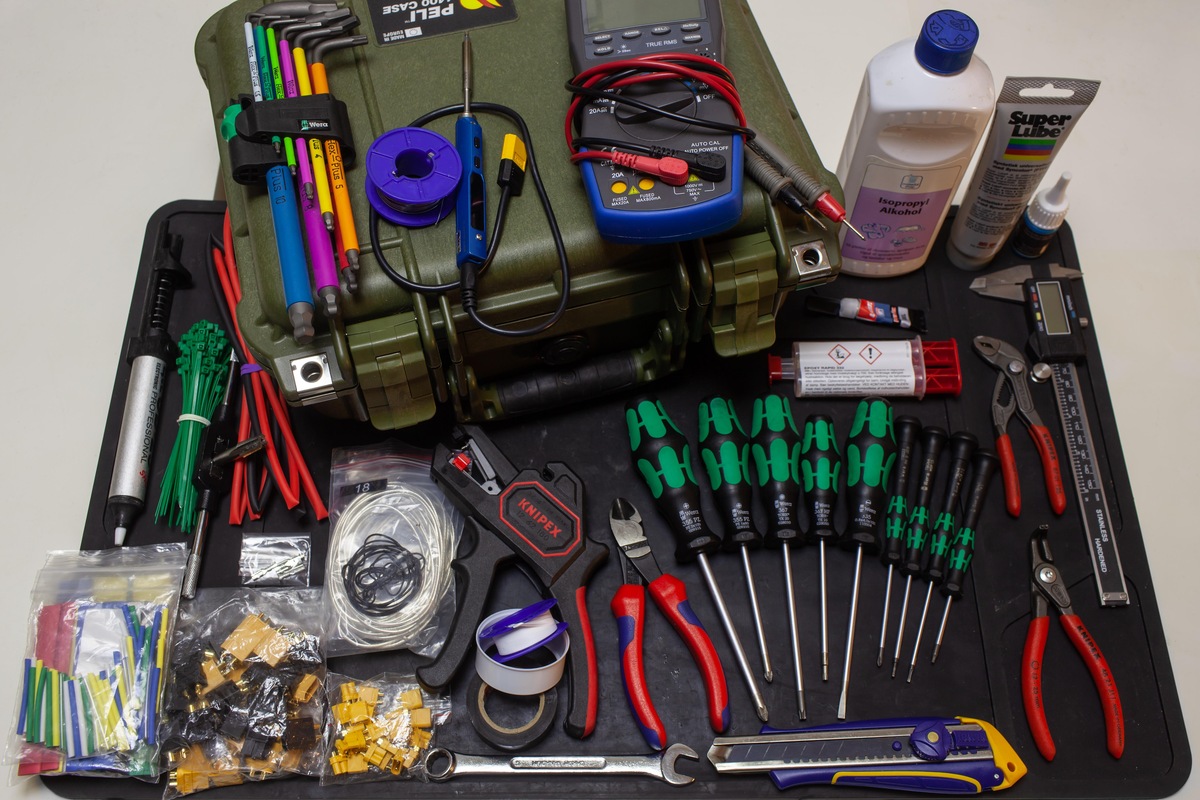

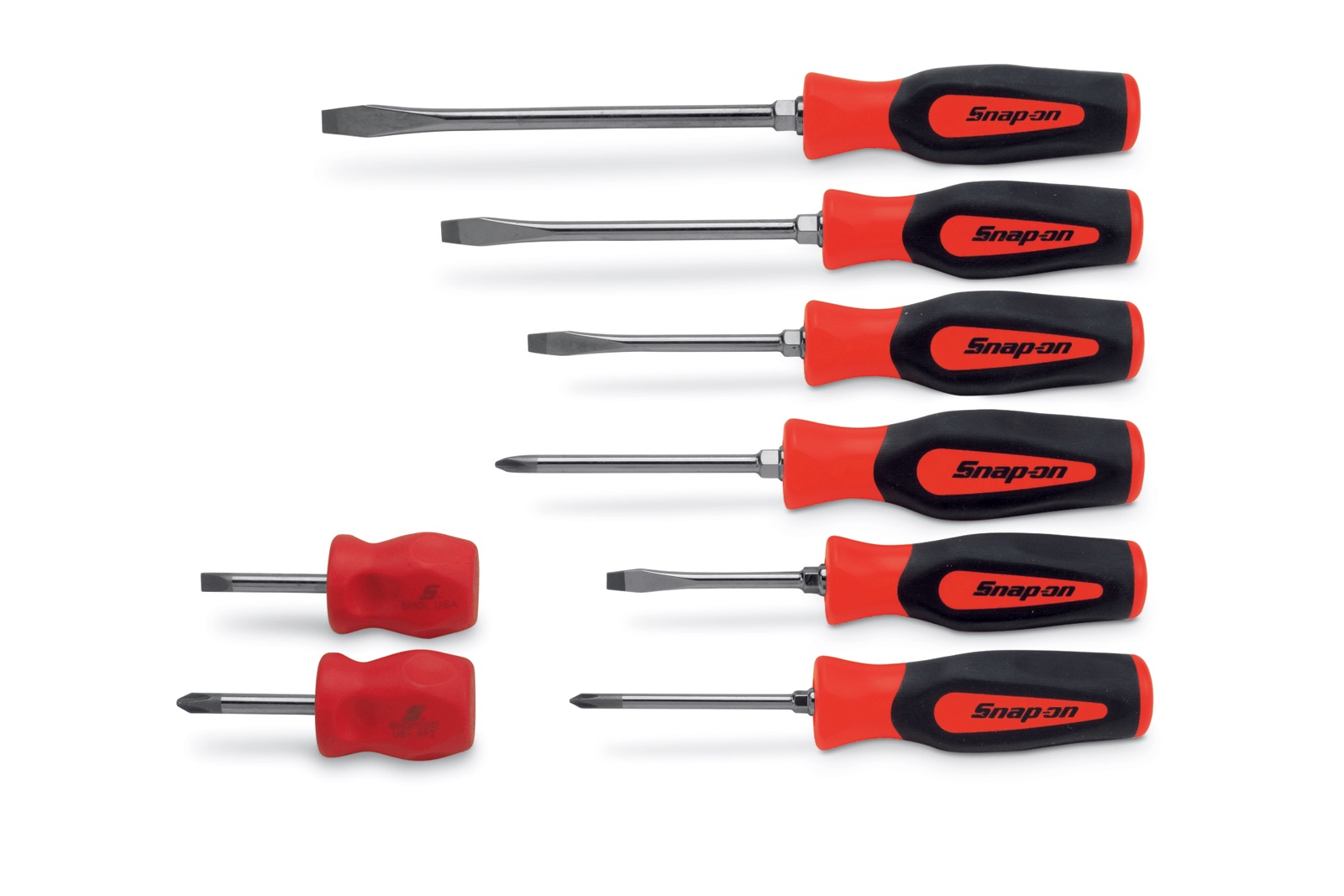
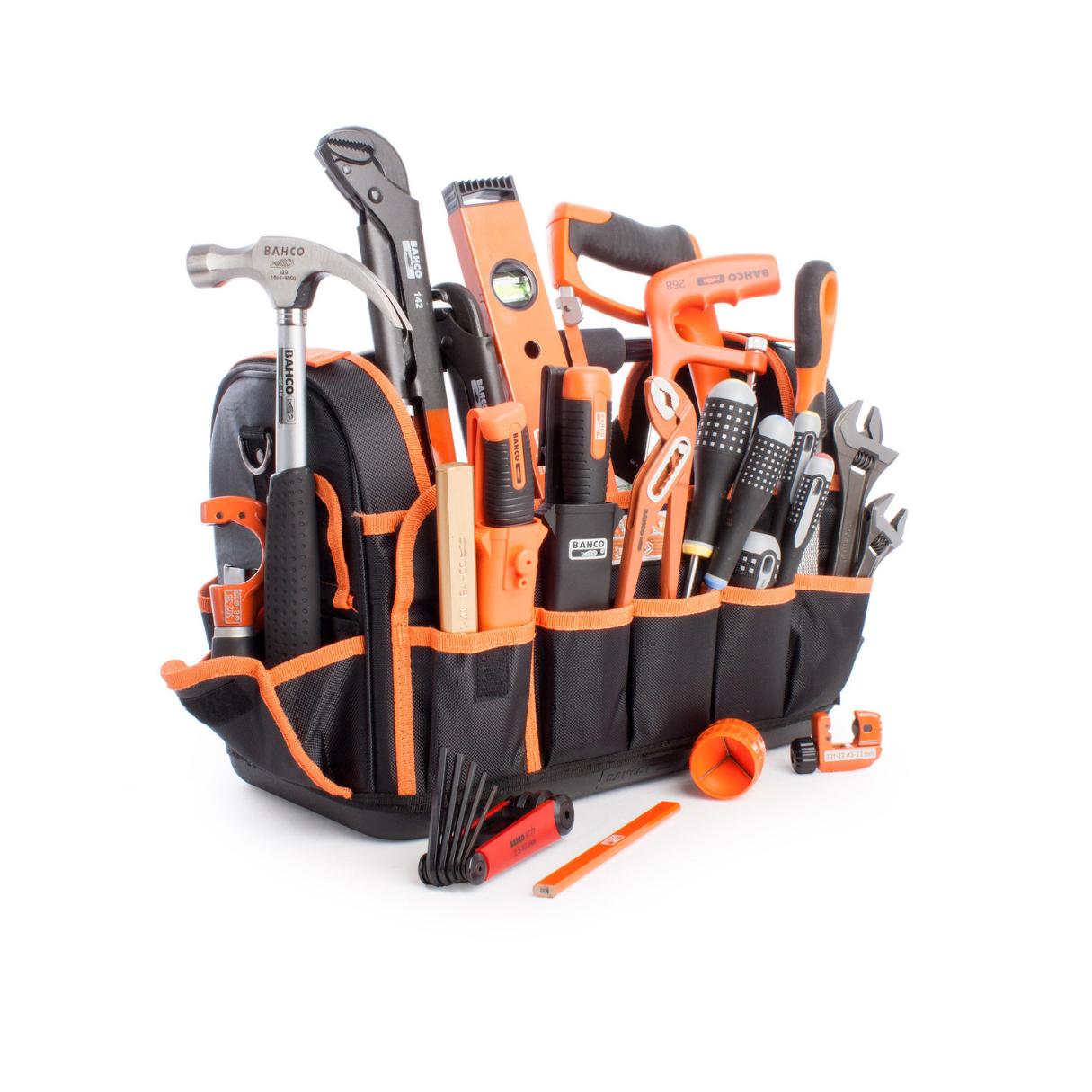
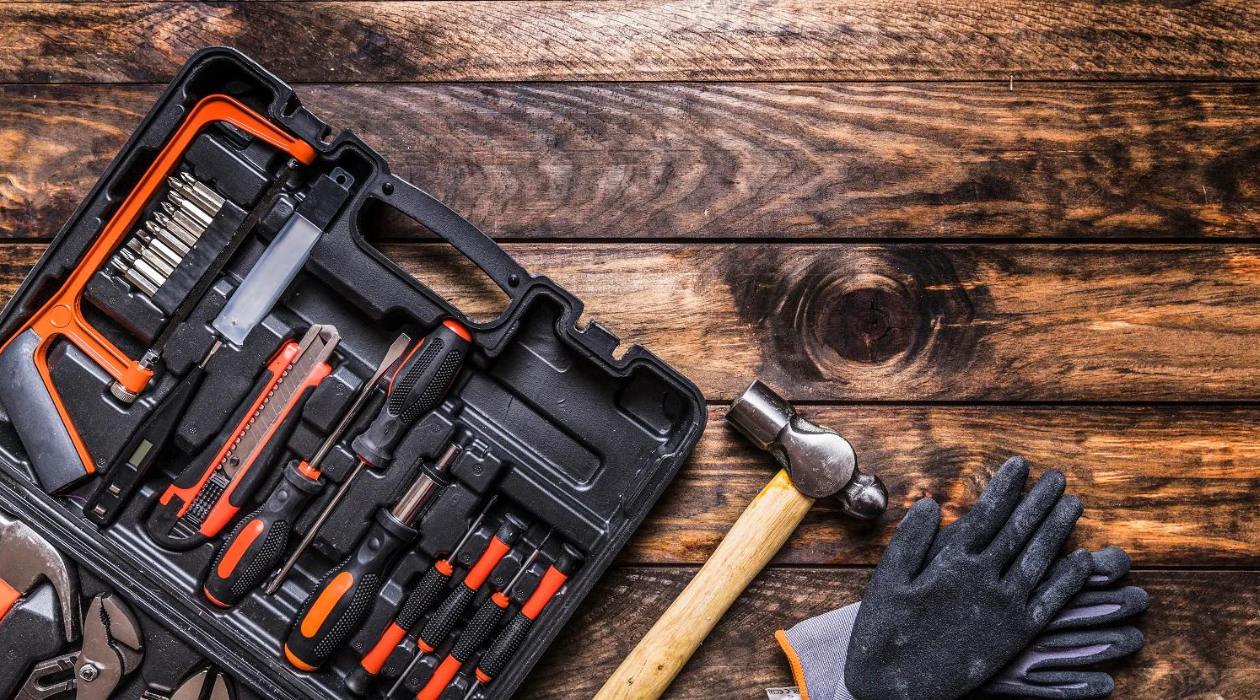
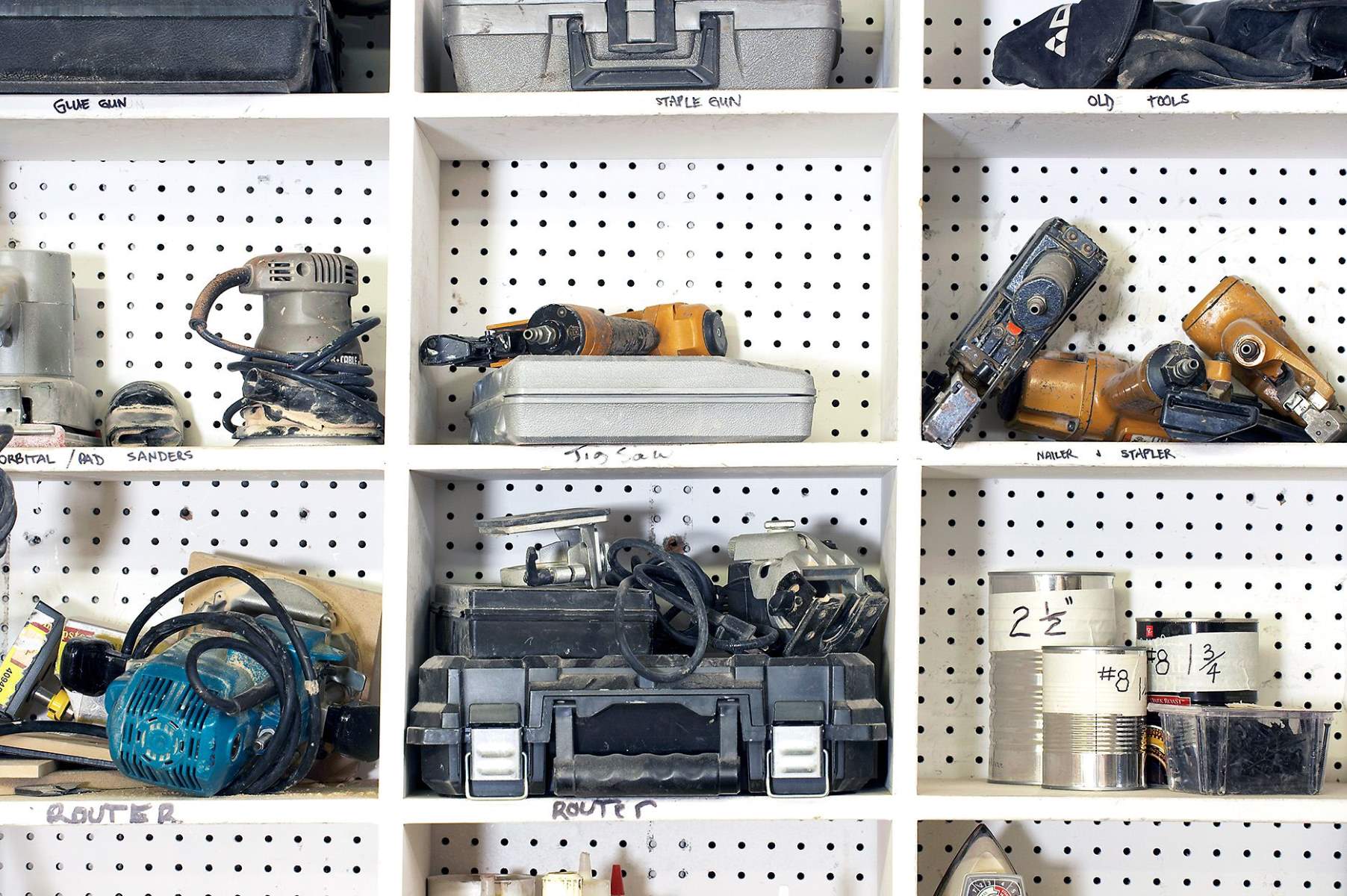
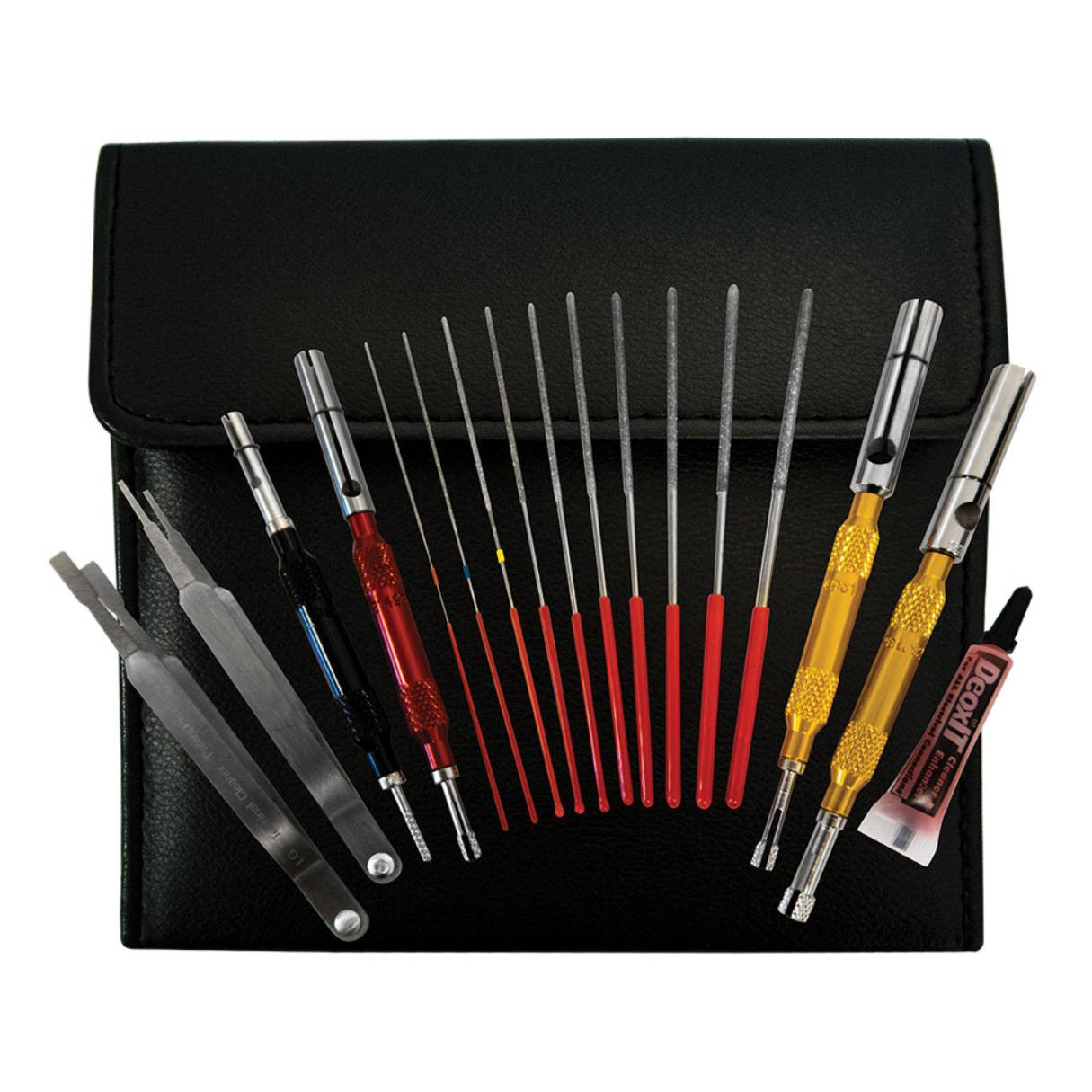
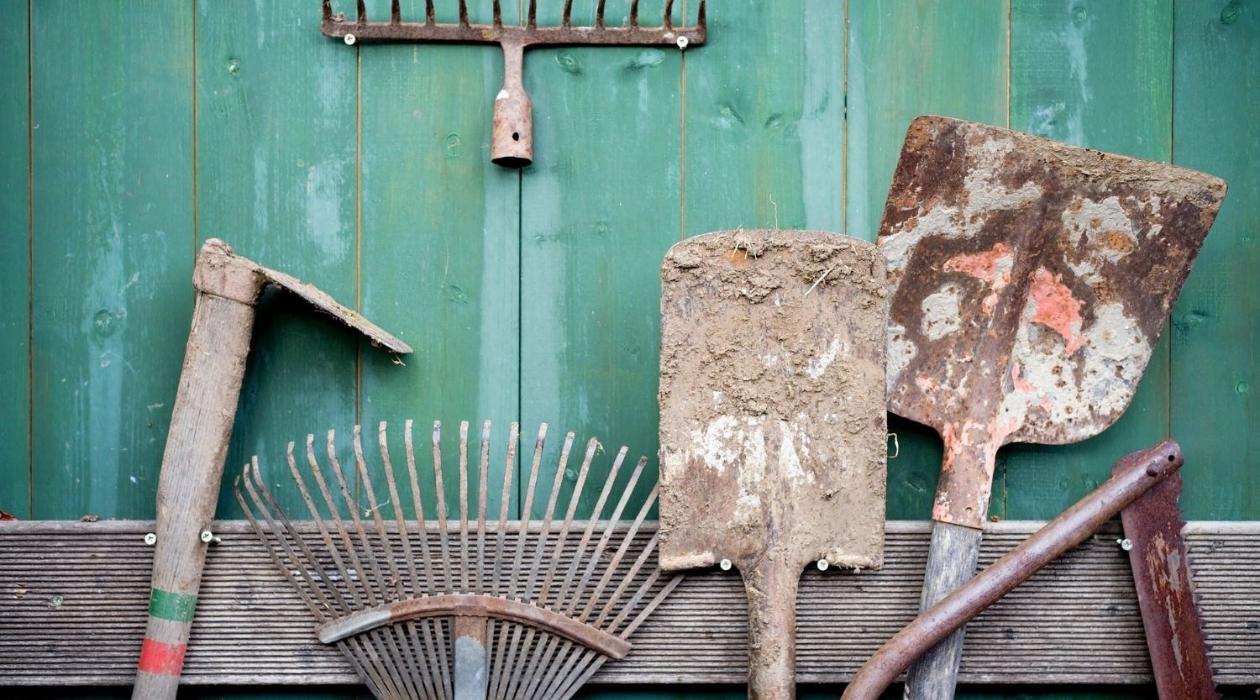
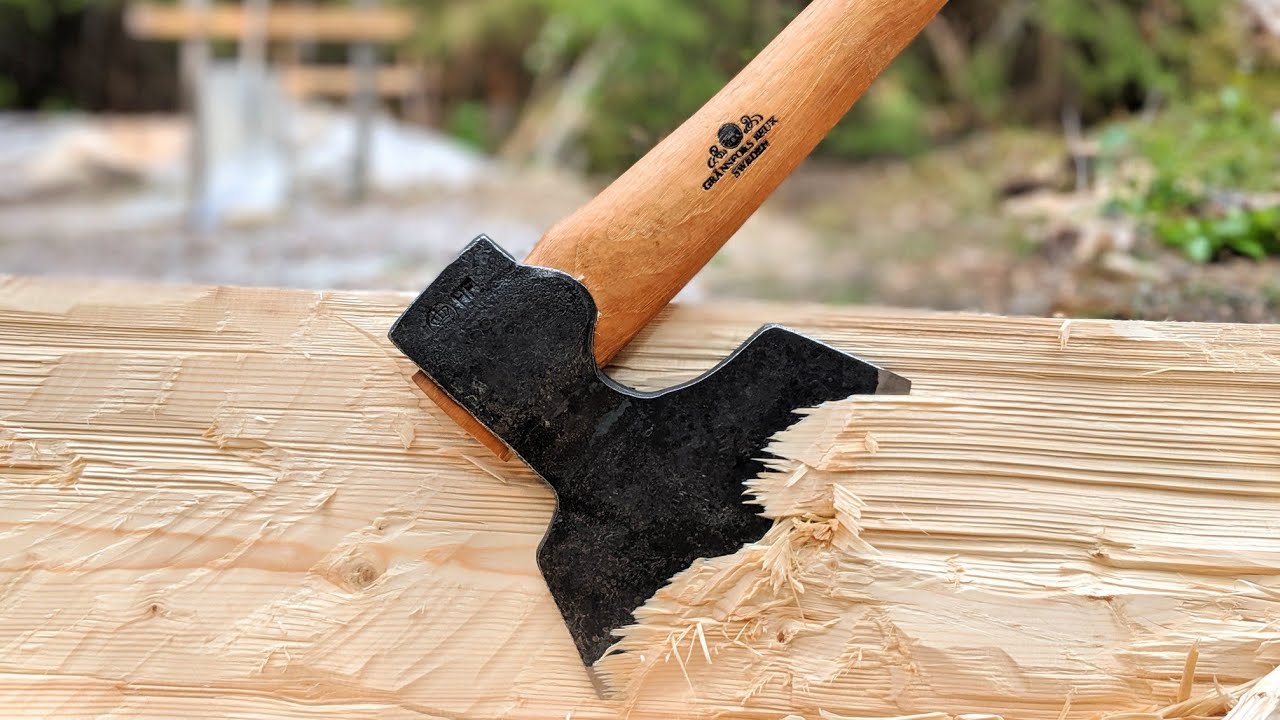

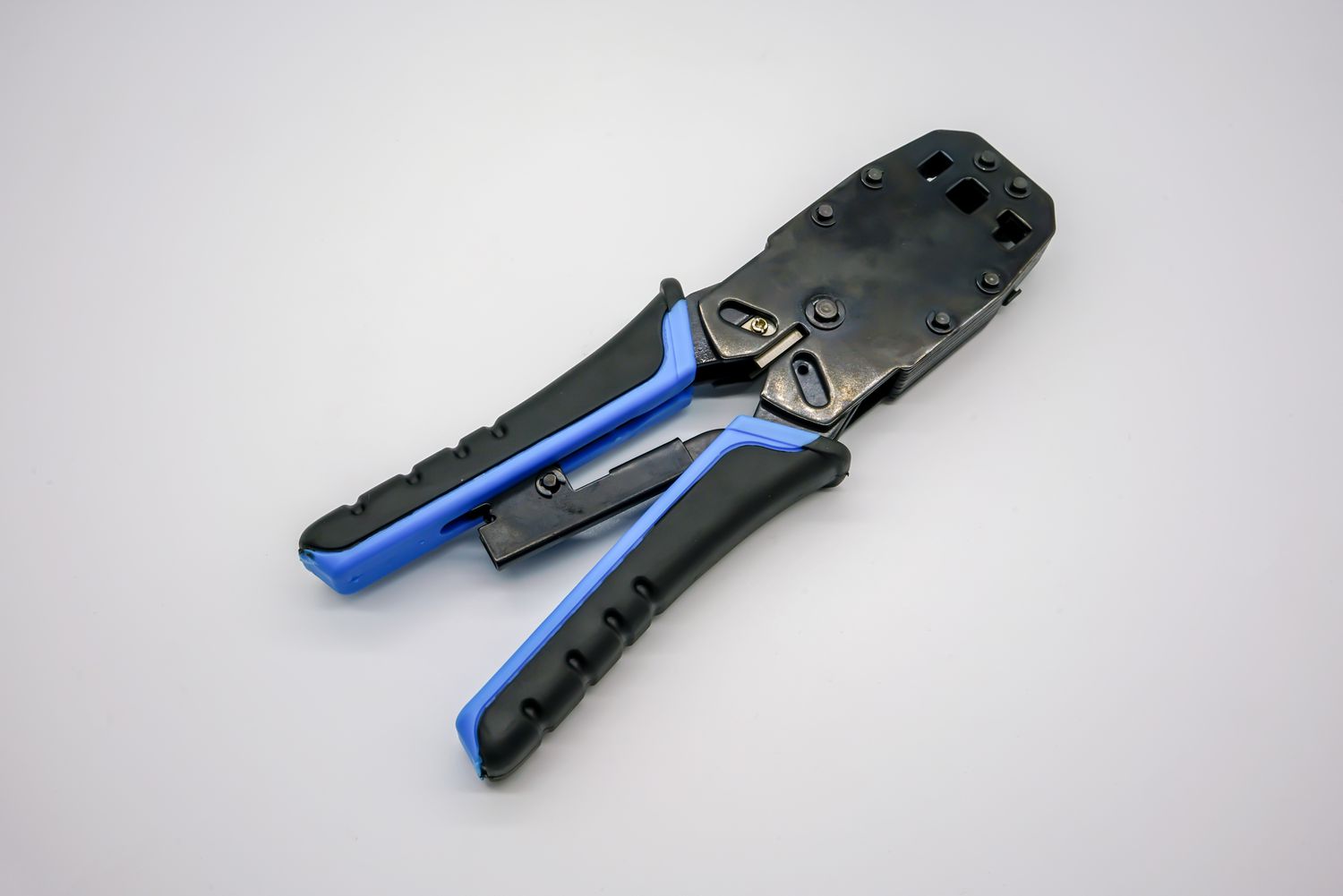


0 thoughts on “What Tools Do You Need To Start Woodworking”